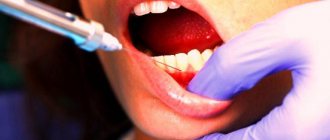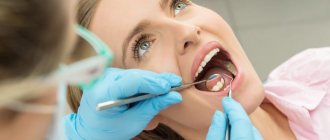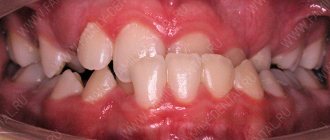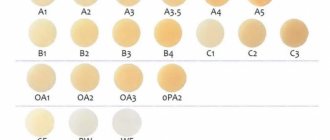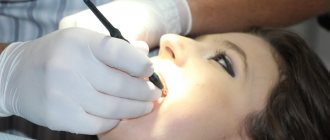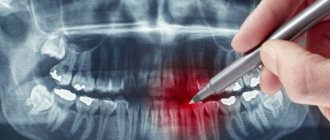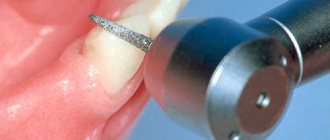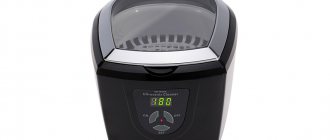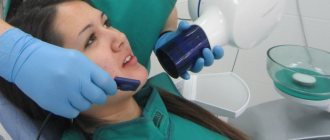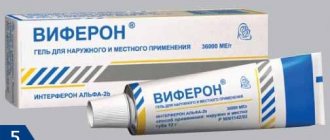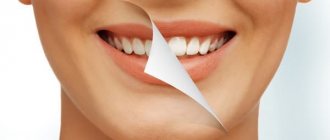Electrophoresis in dentistry is a physiotherapeutic procedure when medicinal substances are introduced into the body through electric current. This method uses special compounds that, under the influence of electricity, disintegrate into ions, accumulate in the pathological area and have a targeted effect on it. Thus, maximum therapeutic effect is achieved.
Indications for the use of electrophoresis in dentistry
- periodontitis;
- pulpitis;
- glossalgia;
- glossitis;
- purulent and inflammatory diseases of the oral cavity;
- dental cysts;
- dental granulomas;
- pathology of the facial nerve;
- inflammation of dental cells (alveolitis);
- lesions of the oral mucosa;
- severe pain after treatment or tooth extraction.
Despite the rapid development of technology in dentistry, electrophoresis has been and remains one of the most effective and affordable physiotherapeutic methods for treating hard and soft dental tissues.
Description of the procedure
When an electric current is combined with medicinal substances, ions are formed - positively charged "+" particles. They penetrate deep into tissues up to 5 mm and at the same time transfer the health complex through the skin into the cells of the body.
An integral part of electrophoresis is the cathode and anode - differently charged electrodes that create an electric field. One of them is placed on a problem area on the patient’s body, the other is clamped in the hand or secured to an area of the body according to the diagram that is attached to the device.
Depending on the effect expected from electrophoresis, either an anode or a cathode is placed on the problem area:
- The “-” cathode conducts alkaline solutions that improve blood flow in the skin, soften it, and stimulate nerve endings. The cathode is often chosen for cosmetic purposes for oily and mature skin.
- The “+” anode conducts acidic solutions to strengthen the skin, relax the body, and improve microcirculation. It is chosen when it is necessary to get rid of redness, inflammation, swelling, and narrowing of pores.
The effect of procedures with an anode or cathode on the body is shown in more detail in the table:
The effect of differently charged electrodes on the body during a galvanic electrophoresis session
| Reaction | Anode "+" | Cathode "-" |
| Changing the acidity of skin pH | Increased acidity (decrease pH) | Alkalinization (increasing pH) |
| Vascular reaction | Arterial hyperemia | Arterial hyperemia |
| Receptor response | Decreased excitability and sensitivity | Increased excitability and sensitivity |
| Skin pore reaction | Closing Pores | Opening of pores |
| Sebaceous and sweat glands | Decreased secretion | Increased secretion |
Electrophoresis can be performed in a clinic or independently at home using special devices. There is nothing complicated in this procedure, just be careful: do not confuse the cathode (negative electrode) and the anode (positive). To do this, you need to study the instructions for use in detail.
Also, not all medicinal drugs are suitable for electrophoresis - only “charged” drugs, and this should be indicated by the corresponding labeling on the drug packaging.
Features of electrophoresis for teeth
The procedure is performed in a treatment room and is comfortable and painless. Allows you to quickly relieve pain in the tissues, inside the dental canal, thereby eliminating foci of infection. Medicines are administered slowly, and the therapeutic effect lasts for several weeks. The risk of developing allergic reactions is minimal.
Medicines used in electrophoresis:
- lidocaine;
- iodine;
- vitamin cocktails;
- calcium;
- a nicotinic acid;
- novocaine, etc.
Purified water, dimexide, and buffer compounds are used as solvents.
Drug electrophoresis in dentistry is performed as follows:
- a special pad is wetted in the medicinal composition;
- the element is fixed at the site of inflammation;
- when treating pulpitis, the teeth are pre-treated and the drug is simultaneously injected into the canals;
- the tissues of the oral cavity are exposed to weak current pulses through the pad;
- The patient is given an electric current with a gradual increase in strength until painful sensations appear. Thus, the optimal indicator of the power of impact on the zone is determined;
- the procedure lasts about 10 – 30 minutes.
The average duration of an electrophoresis course is 10-20 procedures, which are performed daily or with breaks of one or two days.
Sign up for teeth cleaning at a discount:
— What else can additionally be included in professional dental cleaning?
In addition to the four steps mentioned above, you can clean your teeth with dental floss and special abrasive strips. As a rule, this is done according to indications at the polishing stage.
They also often offer another care procedure that helps prevent caries. If the patient has weak enamel, i.e. the risk of caries is increased, the doctor may prescribe remineralizing therapy
- This is a procedure for saturating tooth enamel with calcium. Remtherapy is most often performed as a course at home. The patient receives special mouth guards and gel at the clinic and applies them independently every day. The duration of such therapy is individually selected by the doctor.
Equipment for depophoresis
The active substance is delivered to the affected area using special equipment. At the moment, highly specialized devices for depophoresis are produced solely by the company HUMANCHEMIE, which produces only one model - ORIGINAL II. The device is officially approved by the developer of the method and has a full functional set for high-quality and convenient performance of the procedure in a modern dental clinic:
- sets the duration of the session;
- sets the current strength;
- controls the stage of the procedure (taking into account the current strength and time).
All other examples of devices are complex devices designed to perform several dental procedures.
In addition to technology, to perform the procedure efficiently, you will need a set of specific drugs:
- Disinfectant compositions are represented by various suspensions based on copper and calcium hydroxide - cupral. Various versions come in the form of a powder (diluted in water to form a solution for depophoresis) or a paste (used to temporarily seal canals). Taking into account the main active ingredient, the depophoresis technique is also called cupral-depophoresis.
- Atatsamite is a powder preparation of plastic bactericidal cement for final filling of sterile dental canals.
REFERENCE! In some cases, calcium hydroxide is used to disinfect canals, but a mixture of calcium and copper hydroxides increases efficiency tenfold, which makes the use of cupral relevant as the main drug for depophoresis.
Methodology
Electrophoresis with calcium for teeth can only be carried out in a hospital, under the supervision of the staff of the physiotherapy department. It is impossible to do this procedure at home.
The treatment process takes 15-20 minutes. Disposable electrodes are applied to the patient's upper and lower jaw. The bottom electrode is in contact with a cloth soaked in a calcium solution. To complete the circuit, a passive electrode with a cloth moistened with water is applied to the skin of the forearm. With the right parameters, the process should be completely painless.
Among the side effects, hyperemia on the hand or mucous membrane from the electrode is occasionally observed. To avoid redness, it is better to alternate hands after each procedure. Or it is necessary to adjust the strength of the supplied current. Also, the napkin must be sufficiently moistened, otherwise you will feel an unpleasant tingling sensation.
The leading cause of tooth loss is tooth decay, even though there are successful treatments for it. This shows how poorly developed hygienic education is among the population, since the risk of developing the disease depends 85% on the person (on the level of hygiene, healthy lifestyle, eating habits). You should not expect a miracle and a high therapeutic effect from electrophoresis and other physiotherapy procedures in the case when a person is not able to carry out daily oral hygiene.
Contraindications
There are also contraindications to the use of therapeutic electrophoresis in dentistry:
- Decompensated diseases of the heart and blood vessels.
- Severe hypertension.
- Allergic reactions, individual intolerance to electrophoresis drugs.
- A general inflammatory process that is accompanied by an increase in body temperature.
- Diseases of the hematopoietic system, blood clotting disorders.
- Bronchial asthma.
- Presence of an implanted pacemaker.
- Epilepsy with frequent seizures.
- Cancer, cachexia.
- Toxicity.
- Mental illnesses that make a person unable to follow doctor's instructions.
Electrophoresis, although a good physical therapy technique, is not a therapy in itself. Electrophoresis can only be used as an addition to the main treatment, helping to restore health as quickly as possible.
Depophoresis: indications and contraindications for the procedure
Main indications for depophoresis:
- dental canals of complex shape (curved, deformed, with an extensive network of microtubules);
- the presence of residual pulp tissue in the canals (especially if gangrenous areas are present);
- the need to correct poor-quality fillings;
- the presence of foreign bodies in the dental canals;
- channels that are too wide or too narrow;
- multiple microholes in the tissue structure;
- radicular cysts and granulomas (the method allows you to treat the problem non-surgically, directing a suspension of calcium-copper hydroxide not only from the smallest nooks of the root system, but also into the cavity of the cyst, completely clearing it of pathogens and damaged tissue);
- standard depulpation procedure (for high-quality disinfection).
Several sessions of depophoresis may be needed to achieve results.
REFERENCE! During the process of depulping canals of complex shape, the tip of the pulp extractor may break off. A stuck fragment often cannot be removed without destroying the root tissue. Root canal depophoresis successfully solves the problem by completely sterilizing the fragment itself and the space surrounding it, after which the foreign object can remain inside the tooth without creating a threat of infection.
In addition to the effect of intensive sterilization, calcium-copper hydroxide ions contribute to the restoration of bone tissue. The effect of electric current stimulates the processes of osteocement synthesis, due to which the root canals are quickly sealed, the tissues restore their structure, and the tooth becomes stronger. The list of contraindications to depophoresis is small. These are mainly pregnancy, individual intolerance to the active substance (possible allergy to copper ions) and the acute phase of periodontitis. The reason for failure may be old silver pins in the tooth (risk of severe corrosion with the release of toxic substances).
IMPORTANT! A risk factor during depophoresis is any metal crowns, inlays and brackets, so the dentist must remain extremely careful and avoid contact of a metal element of the dental structure with one of the electrodes of the device.
Research by scientists has shown the effectiveness of depophoresis not only in adults, but also in pediatric dentistry. In the presence of formed roots, the procedure strengthens the weakly mineralized tissues of the dental canals and prevents early tooth loss (in childhood, loss can lead to improper development of the masticatory apparatus and jaw structure as a whole).
Efficiency
Electrophoresis with calcium gluconate has only positive effects on teeth.
- It acts locally, without entering the lymph and bloodstream.
- The ionized molecule binds to fluorine much more actively and forms a strong structure.
- Weak currents activate immune processes in the body and chemical and biological reactions.
- A small dose is administered, but the effect is prolonged.
- The sensitivity of hard tooth tissues decreases.
- The antiseptic effect reduces the risk of complications.
Calcium preparations, in addition to electrophoresis, can be administered orally or intravenously. But the percentage of their absorption from the gastrointestinal tract is very small, and when administered into a vein, a number of side effects are observed (fever, tachycardia, etc.).
After electrophoresis, it is necessary to carry out fluoridation of the teeth. Without fluoride, calcium is not able to strengthen in the crystalline structure of the enamel. It is hydroxyfluorapatite that gives enamel hardness and resistance to infection.
Who needs electrophoresis and why?
Physiotherapy is used both in medicine and in cosmetology. But in what cases do you choose one method or another? Electrophoresis will help solve such problems in cosmetology as:
- acne, increased sebum production;
- puffiness of the face, bags under the eyes;
- wrinkles and nasolabial folds;
- acne, scars;
- enlarged pores, general skin depletion.
In medicine, electrophoresis is used much more widely, as evidenced by the following indications for use:
- diseases of the respiratory system: pneumonia, tracheitis, bronchitis, etc.
- diseases of the ENT (ear, throat, nose) organs: otitis media, pharyngitis, etc.
- diseases of the gastrointestinal tract: gastritis, colitis, etc.
- diseases of the cardiovascular system: atherosclerosis, angina, etc.
- diseases of the genitourinary and nervous systems;
- diseases of the musculoskeletal and endocrine systems;
- skin diseases;
- postoperative rehabilitation: wounds, scars;
- dental and eye diseases.
Before starting electrophoresis procedures, in any case, you should consult your doctor. He will prescribe the required session time (usually from 10 to 20 minutes), the required concentration of the solution and select the medicine. Also, if you are taking any medications or doing other physical therapy procedures, it is worth warning about this. It is very important not to overload the body, especially for children. Electrophoresis for children should last no more than 10-15 minutes a day, for adults - no more than 25 minutes.
Therapeutic effect
The use of physiotherapy methods allows you to achieve the following effects:
- reduction of treatment time;
- acceleration of the recovery period;
- therapy has a healing, disinfecting, antibacterial effect;
- reduction of pain syndrome;
- healing, activation of tissue regeneration;
- achieving positive dynamics in stagnant, chronic processes.
The first results are visible after the first or second procedure. But treatment cannot be interrupted; the course should be completed unless there is an indication for interruption. Therefore, the doctor must monitor the therapy and the patient’s condition.
WHY ARE COMPLEX TEETH DONE IN PARTNER-MED?
We know how to work!
We have orthopedic dentists with 8-30 years of experience!
We love to work!
We will give you a free consultation and tell you exactly how best to make your teeth better!
We are responsible for the result!
We work conscientiously and will make your teeth LIKE YOURSELF!
Request a call back or dial our number!
+7
This phone call does not obligate you to anything. Just give us a chance and we will help you!
Just pick up the phone and call us!
+7
We will definitely make you an offer that you cannot refuse!
results
Identified clinical strains of facultative anaerobic bacteria obtained from dental root canals were used to study the antimicrobial effect of various types of transcanal direct current exposure in vitro
.
We studied the antibacterial effect of apex phoresis, transchannel anodegalvanization, transchannel electrophoresis of iodine from a 10% solution of potassium iodide, transchannel electrophoresis of iodine from a 10% solution of potassium iodide with the addition of 5% iodine tincture, and depophoresis of copper-calcium hydroxide in vitro
.
The data given in the table
Diameter (in mm) of the growth inhibition zone of colonies of anaerobic bacteria after various types of direct current exposure (M±m) Note.
p<0.05, which corresponds to a probability of correct prediction of 95.5%. indicate that a pronounced antibacterial effect (diameter of zones of growth inhibition of more than 10 mm) was obtained against all studied strains of anaerobic bacteria in cases where an anode was used as an active electrode - anodegalvanization and apex phoresis. Despite the different doses of exposure for these procedures, their in vitro
is equally high. This is explained by the fact that during apex phoresis, along with copper, silver plays an important role, which makes it possible to obtain a pronounced antibacterial effect with a significantly smaller amount of electricity during exposure.
Electrophoresis of iodine from a 10% potassium iodide solution did not reveal any significant antibacterial activity. Zones of delayed growth of microorganism colonies after iodine electrophoresis were found only in Str
.
salivarius
and
Candida krusei
.
Moreover, in relation to Str
.
salivarius,
the antibacterial effect was insufficient (the diameter of the growth inhibition zone was about 5 mm).
Study of the antibacterial activity of iodine electrophoresis from a mixture of 10% potassium iodide solution and 5% iodine tincture in vitro
revealed its higher efficiency compared to electrophoresis from a 10% potassium iodide solution.
Four species of representatives of facultative anaerobic bacteria showed high sensitivity to this type of influence (growth inhibition zones of more than 10 mm), namely
:
St. epidermidis
,
Str
.
salivarius
,
Cl
.
spp., Candida krusei
.
It should be noted that in the control sectors an antimicrobial effect was also observed against the mentioned bacteria. This was the only case of registration of suppression of the growth of microorganism colonies in the control of all studied types of transchannel effects with direct current. Moreover, in those sectors where the electrical procedure was not carried out, growth inhibition
zones
St. epidermidis
,
Str
.
salivarius
,
Cl
.
spp. were about 5 mm, and the zone of growth inhibition of Candida krusei
in the control did not differ significantly from the zone obtained after the electrical procedure and amounted to 15.8 ± 0.05 mm.
However, despite the pronounced antibacterial effect of electrophoresis of a mixture of 10% potassium iodide solution and 5% tincture of iodine
on
St. epidermidis
,
Str
.
salivarius
,
Cl
.
spp., Candida krusei
, regarding
Str
.
sanguis
,
Str
.
mutans
and
E.
_
coli
this effect was ineffective.
When studying the depophoresis of copper-calcium hydroxide in vitro
The antibacterial effect of this method was revealed in relation to only one of the seven studied anaerobic representatives of the root canal microflora.
Thus, as a result of studying the antibacterial effect of various types of transchannel effects with direct current in vitro
It was found that only effects carried out from the anode, namely transcanal anode galvanization and apex phoresis, have a pronounced antibacterial effect against all studied strains of pathogenic anaerobic bacteria sown from the root canals of teeth.
A bacteriological study carried out at the end of the course of apex phoresis for pulpitis did not reveal any type of microorganisms found in the root canals before treatment. In a molecular genetic study of material obtained from the root canals of teeth, where there were no periapical changes, after apex phoresis of DNA, not a single type of microorganism determined by PCR was found.
With periodontitis after apex phoresis in the vast majority of patients, as well as with pulpitis, pathogenic microflora in the root canals was not detected. Only in one case, as a result of anaerobic cultivation, was Str
.
mutans
, and using PCR diagnostics -
DNA
P. intermedia
.
Thus, microbiological studies of material obtained from the root canals of teeth after a course of apex phoresis confirmed the high antibacterial effectiveness of this treatment method.
After transchannel anode galvanization, only in isolated cases, using a bacteriological research method, it was possible to detect Str
.
salivarius
for pulpitis
and
St. epidermidis
in periodontitis; in all other patients, pathological microflora in the root canals of the teeth was not detected.
At the end of the course of anodegalvanization, using PCR diagnostics in the absence of periapical changes in the root canals, difficult-to-cultivate anaerobic pathogenic microflora was not detected; in periodontitis, genetic markers P
.
gingivalis
.
The study of the antibacterial effect of transchannel anode galvanization in the clinic showed the high antimicrobial activity of this method.
After the clinical use of transcanal electrophoresis of iodine from a 10% solution of potassium iodide in material obtained from the root canals of teeth, a decrease in the number of detected microorganisms was noted. Thus, in the absence of periapical changes after the procedures, the frequency of detection of various types of anaerobic bacteria using bacteriological examination was as follows: Str
.
sanguis
- 10%,
Str
.
mutans
- 20%
,
St. epidermidis
- 20%
and
E. coli
- 10%, with destructive forms of chronic periodontitis:
Str
.
mutans
- 38%
,
St. epidermidis
- 13%,
Str
.
salivarius
- 13%,
Str
.
sanguis
- 26%.
Molecular genetic research has revealed genetic markers of the following difficult-to-cultivate anaerobic bacteria
:
T. denticola
and
P.
_
gingivalis
with
pulpitis, as well as
P. intermedia
- 25%,
P
.
gingivalis
- 13%
,
A. actinomycetemcomitans
- 13% - for periodontitis.
Thus, despite the fact that the use of transcanal iodine electrophoresis from a 10% potassium iodide solution helped to reduce microbial contamination of the root canals, the frequency of detection of pathogenic anaerobic microflora in the root canals at the end of the course of procedures was quite high.
The results of the study, obtained after the clinical use of electrophoresis of a mixture of 10% potassium iodide solution and 5% iodine tincture, indicated its higher antibacterial effectiveness compared to electrophoresis of a 10% potassium iodide solution. With pulpitis after the procedure, Str
.
sanguis
in 13% and
Str
.
mutans
- in 25% of patients.
Using PCR diagnostics, P
.
gingivalis
in 13% of patients in this group.
Str.
were obtained from root canals using bacteriological examination .
sanguis
and
E.
_
coli
- 13%,
Str
.
mutans
- 26%.
Molecular genetic research has made it possible to identify genetic markers
of
P. gingivalis
and
A.
_
actinomycetemcomitans
in 13% of cases.
After depophoresis of copper-calcium hydroxide in the absence of pathological changes in the periodontium, St
.
epidermidis
and
Str
.
salivarius
in 11% of patients; in destructive forms of chronic periodontitis,
Str
.
mutans
and
Str
.
salivarius
.
PCR diagnostics after treatment for pulpitis did not detect any of the five genetic markers of difficult-to-cultivate anaerobes; for periodontitis, P
.
intermedia
.
Results of studying the antibacterial effect of depophoresis in vivo
differ significantly from the data obtained when studying this method
in vitro
, where the only representative of the pathogenic microflora of the root canals for which an antimicrobial effect was detected was
Candida krusei
(see table). With this technique, anaerobic microflora can probably be found under a layer of copper-calcium hydroxide residues in the root canal, since it is impossible to completely remove copper-calcium hydroxide using distilled water before conducting a repeated bacteriological study after depophoresis.
How to do professional ultrasonic cleaning
Until about 10-15 years ago, dentists removed hard plaque using curettes. These are hand tools, very sharp and sharpened at the ends. It is clear that the procedure was painful and injured the enamel and gums. The layer of “living” tissue that is removed with curettes is 5-25 microns. This means that each time the enamel becomes thinner and becomes more and more sensitive.
During gentle ultrasonic cleaning, only 0.1 microns of tissue is removed. It is carried out using an ultrasound machine, which is now installed in almost every dentistry and clinic. A special scaler attachment produces silent vibration vibrations with a frequency of 16 - 45 thousand Hz. The doctor adjusts the amplitude of vibrations to remove different types of plaque, including in hard-to-reach places.
Ultrasonic waves eliminate not only visible yellow plaque, but also subgingival bacterial deposits that accumulate in periodontal pockets and trigger the inflammatory process.
Ultrasound, like a drill, crushes tartar into tiny particles. The resulting stone dust is removed using a mouth “vacuum cleaner”, then the enamel is washed with a stream of water. At the very end, the surface of the teeth is ground and polished using professional nylon brushes and abrasive pastes. The entire session lasts about 30-40 minutes. And if there are too many stones, the procedure takes about an hour.
Types of electrodes for electrophoresis
Devices for electrophoresis in dental practice may look different and have different electrodes, for example, these are:
- An intraoral electrode can have a different shape, most often it is a round lead plate with a diameter of about 1 cm with a wire soldered to it in a waterproof sheath, intended for application to the oral mucosa. Before use, the tiles are wrapped with a special hydrophilic gasket. The doctor places the electrode in a rubber cap with a hole in the front of the plate. When the electrode is placed in the mouth, a seal is placed on the mucous membrane where the electrode is to be placed.
- Gingival electrode. This type of electrode is designed to apply current to the area of the gum that is adjacent to the root of the tooth. Gingival electrodes are rectangular plates several centimeters long, to which insulated wires are soldered. Gauze wrapped in several layers is used as a hydrophilic substrate.
